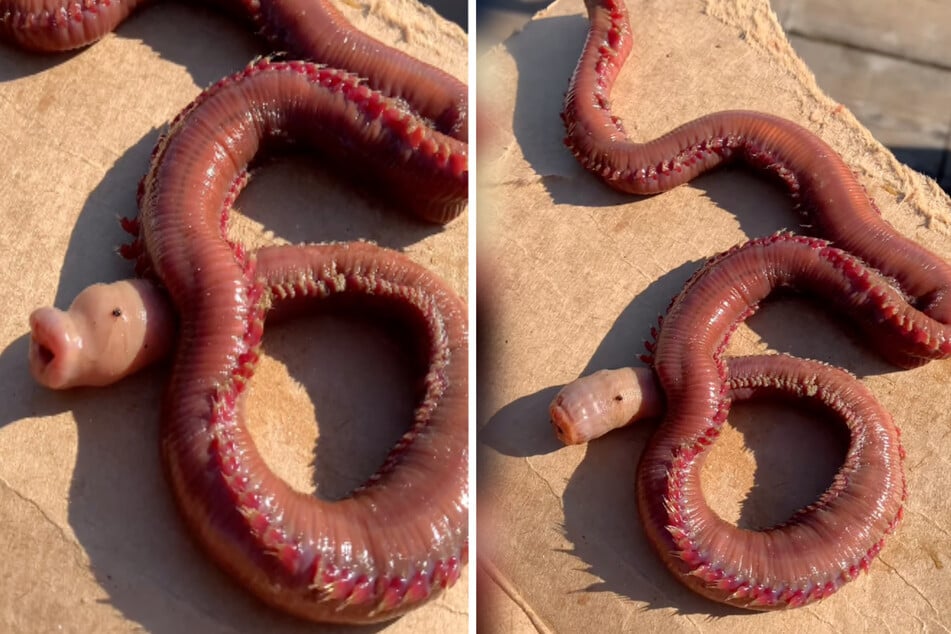Nightmare-inducing "bloodworm" discovered on California beach
Monterey, California - A particularly bizarre sea creature has been discovered on a beach in California. The almost 40-centimeter-long worm has four huge fangs and is shocking the internet. What is the story behind this nightmare find?

The creepy critter was discovered by whale watchers in Monterey, California.
"We found it just hanging out on our dock this morning and we gently scooped it up with some cardboard," reports the employees of Monterey Bay Whale Watch, who shared a corresponding video on Instagram.
The bright red worm is almost 40 centimeters long and has four pointed fangs on its sucking head as well as spines all over its body.
It's clear that this thing is probably not a vegetarian.
It is an American bloodworm, explained the nature lovers, a predatory worm that is native to large parts of the Pacific coast of North and South America where it lurks waiting for prey buried near the beach.
Marine biologists explain all about the bizarre-looking American Bloodworm
The marine biologists from the Monterey Bay Whale Watch explained that "this worm is a rapid burrowing predator and readily everts its long, cylindrical, fanged [throat] both to capture prey and to pull itself through soft sediment."
The pointed fangs are also venomous and can cause inflammation in humans.
But that's not all: "Since its anus appears to be nonfunctional, after a meal it regurgitates the undigested portion through the [throat]."
In other words, the worm gets rid of its excrement through its mouth.
After the whale watchers had photographed the bloodworm, they carefully returned it to the sea where it presumably continues to hunt.
Cover photo: Montage: Instagram/monterey_bay_whale_watch
